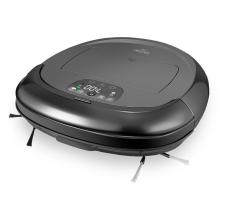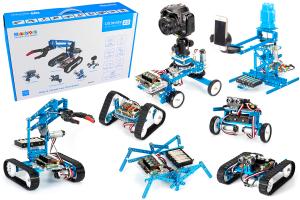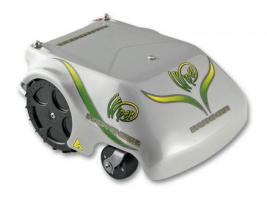It was a busy week in the robotics sector. Here are some of the major stories.
The University of California Berkeley is working on a patch of electronic skin that lights up when it's touched. The idea of being able to turn your arm or forehead into a short-term emergency flashlight is likely very tempting to some, but that's not the use that the developers had in mind, according to reports. The likely uses start with smart wallpaper and carry on into different health-monitoring devices and robotics. For instance, the developers would like to see the light-up skin used as prosthetic limb skin, part of a larger overall system in which the skin of such a limb can sense changes in temperature, pressure or the like, as well as perform self-healing functions. Adding such a skin to a robot, meanwhile, would let a robot be capable of noting tiny changes in its environment.
In another story, the Engineering and Physical Sciences Research Council (EPSRC), a British Research Council that provides many universities in the United Kingdom with government funding for grants to undertake research and postgraduate degrees, has issued major grants to develop robotics and sustainable energy technologies. One project will focus on developing miniaturized robots for surgery and new type of therapies that are targeted to patients with many different conditions.
It was also reported how primates are very efficient when they move in their environment. They make use of all their limbs. NASA's Jet Propulsion Laboratory has adapted this locomotion in its RoboSimian, a robot primarily designed for search and rescue operations. It was designed in collaboration with Stanford University. The RoboSimian can adapt to virtually any terrain because it uses four limbs to get around. With the right algorithm in its system it could potentially be deployed in different environments where wheeled and humanoid robots might have difficulty in maneuvering. It will take part in the Defense Advanced Research Projects Agency (DARPA) Robotics Challenge (DRC) later this year in Florida.
In still another story, Willow Garage has a robot called the PR2 that is currently available in the marketplace. It is designed to navigate in its environment without running into things, manipulate objects on command, and uses its hands to grasp things.
And it was reported how the perception in society is that robots take away jobs from humans. That may not be true. The Association for Advancing Automation (A3) has announced that its president, Jeff Burnstein, was scheduled to speak at the Congressional Robotics Caucus briefing held this week. His talk was titled “Harnessing New Robotics Technologies for Job Creation.” The briefing will focus on how robots are contributing to economic growth and are creating jobs in the United States.





